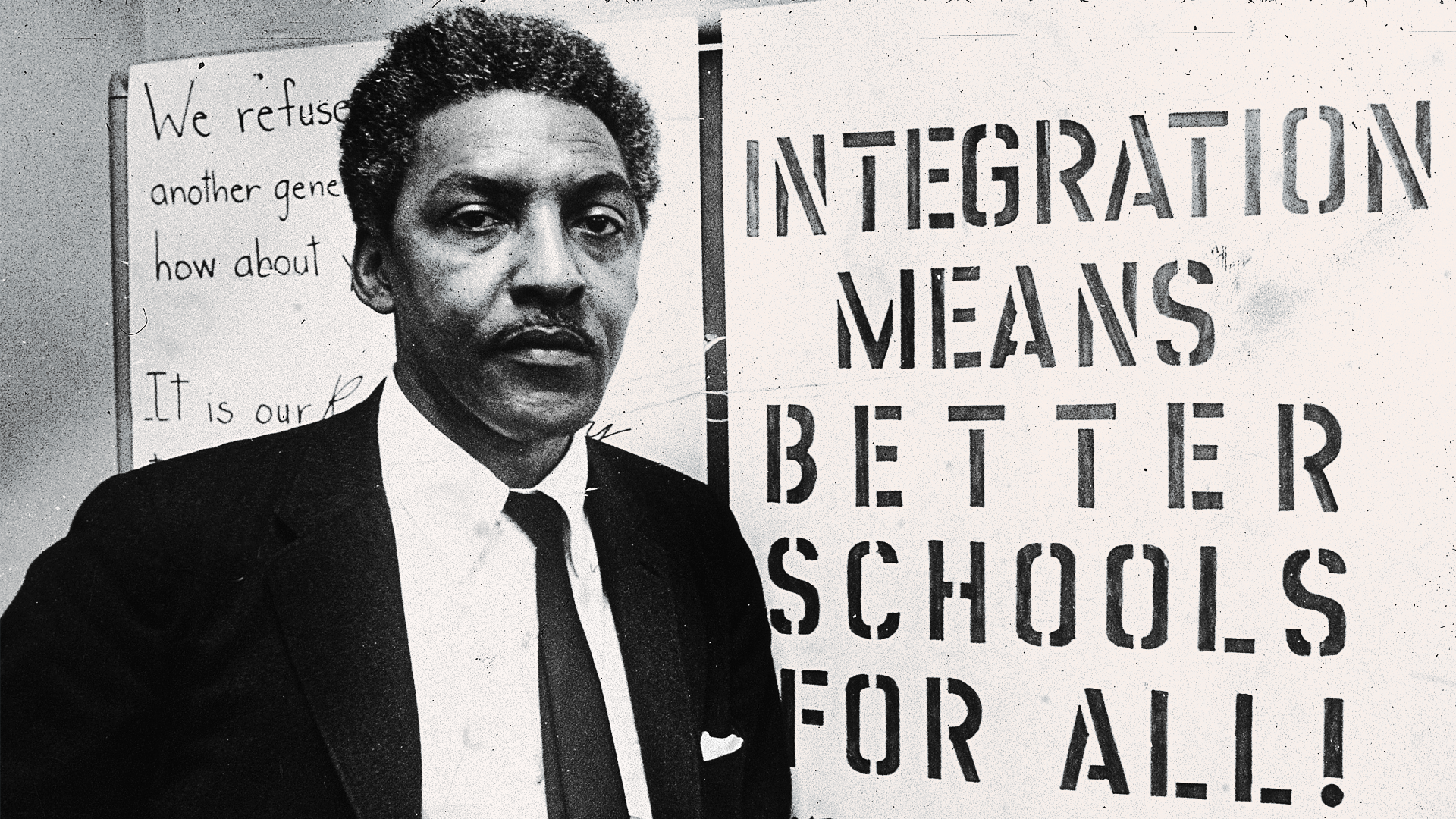Bayard Rustin

Illustration of Bayard Rustin speaking at a podium with a background of protest signs from the March on Washington.
Biography
Bayard Rustin was born on March 17, 1912, in West Chester, Pennsylvania, raised by his Quaker grandparents who taught him that peace and justice are non-negotiable. Their home was a hub of activism—W.E.B. Du Bois and other Black leaders were regular visitors. That upbringing shaped everything Rustin became: a bold thinker, a brilliant organizer, and a lifelong pacifist.
Rustin’s activism took root early. He joined the Young Communist League in the 1930s, believing it was one of the few groups serious about fighting racism—but left when they shifted focus away from civil rights. He later helped co-found the Congress of Racial Equality (CORE), studied Gandhi’s methods in India, and helped integrate interstate buses in the 1947 Journey of Reconciliation—a precursor to the Freedom Rides. That campaign landed him on a brutal North Carolina chain gang, where he endured 22 days of hard labor.
Despite his deep knowledge of nonviolence and unmatched ability to organize, Rustin was often pushed to the margins of the Civil Rights Movement. The reason? He was openly gay, and in a time when homosexuality was criminalized and demonized, many leaders feared his presence would be used to undermine their work. Rustin never hid who he was, and he never stopped fighting.
In the 1950s, he became a trusted advisor to Dr. Martin Luther King Jr., helping to shape King’s understanding of nonviolent resistance. He drafted speeches, organized campaigns, and quietly mentored one of the most important leaders of the 20th century. When civil rights leaders began planning the March on Washington in 1963, Rustin was the obvious choice to run the show. In just eight weeks, he coordinated buses, bathrooms, security, and stage access for over 250,000 people—a logistical miracle and a historic triumph.
Rustin’s work didn’t end there. He led the A. Philip Randolph Institute from 1965 to 1979, promoting Black labor rights and political coalition-building. He later served on human rights missions to Vietnam, Haiti, and Africa. In the 1980s, he became an outspoken advocate for LGBTQ+ rights and AIDS awareness. He believed every injustice—whether rooted in race, sexuality, class, or nationality—was part of the same fight.
Bayard Rustin died on August 24, 1987, from complications following a ruptured appendix. Though he never sought the spotlight, his fingerprints are all over the fight for freedom in America.
Bayard Rustin wasn’t just a brilliant mind—he was the movement’s architect. While others gave the speeches, he built the stage. His mastery of nonviolent strategy helped transform protests into policy and dreams into action. He showed us that movements need both vision and structure, heart and hustle. And he did it all while being unapologetically himself—a Black, gay man in a country that tried to silence him. His story reminds us that those at the margins often hold the keys to transformation. Rustin made the movement move, and his life is a blueprint for anyone who wants to make lasting change.
?
Why was Rustin often kept in the background of the Civil Rights Movement?
How did Rustin’s Quaker upbringing influence his activism?
In what ways did Rustin build coalitions between different groups like labor unions, civil rights activists, and religious leaders?
How did Rustin’s experiences abroad shape his work in the U.S.?
What lessons can today’s activists learn from Bayard Rustin’s approach to organizing?
Dig Deeper
A powerful TED-Ed-style talk exploring Rustin’s life, his quiet brilliance, and his impact on the Civil Rights Movement.
This Crash Course episode breaks down the origins of the 1963 March and Rustin’s pivotal role in making it happen.
Discover more

Martin Luther King Jr.
Martin Luther King Jr. was a transformative leader in the American Civil Rights Movement, advocating for justice through nonviolent resistance.

Sojourner Truth
Sojourner Truth was a formerly enslaved woman who became one of the most powerful voices in American history for abolition, women’s rights, and racial justice.

Rosa Parks
Rosa Parks did not simply stay seated because she was tired—she sat down and refused to move because she was tired of giving in.
Further Reading
Stay curious!
